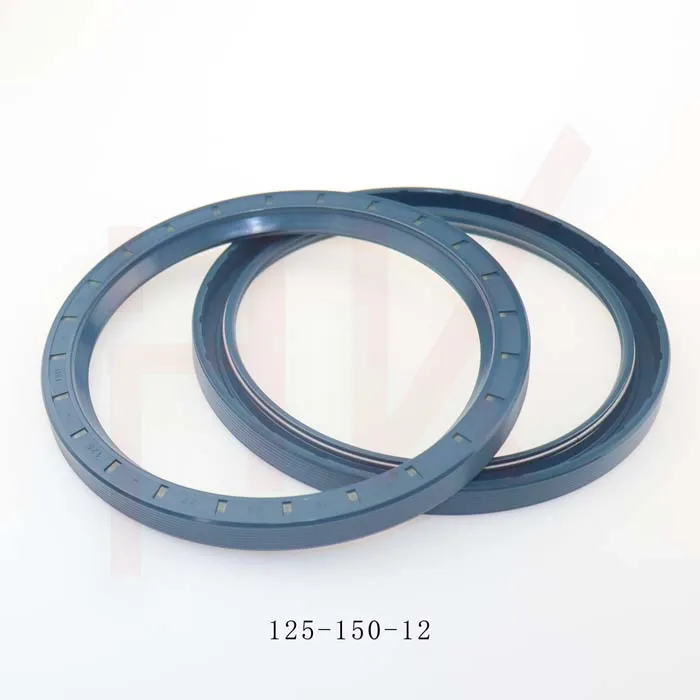Dec . 01, 2024 16:24 Back to list
hydraulic cylinder seal kit material
Understanding Hydraulic Cylinder Seal Kit Materials
Hydraulic systems play a crucial role in various industries, from manufacturing to construction, providing the necessary force to operate machinery and equipment. At the heart of these systems are hydraulic cylinders, which convert hydraulic energy into mechanical energy. Essential to the efficient operation of hydraulic cylinders are seal kits, which are designed to prevent leaks and ensure optimal performance. The choice of material for these seals significantly impacts the functionality, durability, and reliability of hydraulic systems.
The Importance of Seal Kits
Hydraulic cylinder seal kits are composed of various seals, including O-rings, rod seals, piston seals, and backup rings. Each type serves a specific purpose, helping to maintain the integrity of the hydraulic fluid within the cylinder and preventing it from leaking out. This is crucial not only for the operation of the hydraulic system but also for safety and environmental considerations. Contaminated or lost hydraulic fluid can lead to operational inefficiencies, increased wear on components, and even catastrophic failures.
Common Materials Used in Hydraulic Seals
1. Nitrile Rubber (NBR) Nitrile rubber is one of the most commonly used materials for hydraulic seals. Known for its excellent resistance to oils and fuels, NBR is suitable for a wide range of hydraulic fluids. Its good mechanical properties, combined with its ability to withstand moderate temperatures, make it a go-to choice for many hydraulic applications. However, Nitrile may not perform well in extreme temperatures or in environments with high levels of water or steam.
2. Polyurethane (PU) Polyurethane seals are known for their superior abrasion resistance and low friction properties. These seals can operate effectively in a wide range of temperatures and fluid conditions, making them versatile for various applications. Their elasticity allows them to provide a tight seal even when the cylinder experiences considerable wear over time. However, polyurethane is sensitive to certain chemicals, so it’s essential to verify compatibility with the hydraulic fluids used.
hydraulic cylinder seal kit material

3. Fluoroelastomer (FKM) Fluoroelastomers, also known as FKM, are high-performance sealing materials capable of withstanding extreme temperatures and aggressive chemical environments. They are particularly well-suited for hydraulic systems that operate under high pressures and temperatures. The longevity and reliability of fluoroelastomer seals make them an excellent choice for demanding applications, despite their higher cost compared to other materials.
4. Silicone Rubber Silicone rubber is notable for its excellent temperature resistance, making it suitable for extreme conditions. While not typically used for hydraulic applications due to lower mechanical strength and abrasion resistance, it can be utilized in specific scenarios where flexibility and high-temperature performance are required. Silicone is commonly used in the rods of hydraulic cylinders where flexibility and cushioning are essential.
5. PTFE (Polytetrafluoroethylene) PTFE is renowned for its chemical resistance and low friction properties. It is often used in backup rings or bearing seals within hydraulic applications. Its lack of elasticity means it is typically used in conjunction with more compressible materials to achieve an effective seal. PTFE is ideal for high-performance applications where chemical compatibility and minimal friction are paramount.
Selecting the Right Material
Choosing the right seal kit material is critical for maintaining hydraulic system efficiency and longevity. Factors such as the type of hydraulic fluid, operating pressure, temperature ranges, and environmental conditions must all be considered in the selection process. Compatibility with the system's specific operating conditions determines the seal's performance and lifespan.
In conclusion, understanding the various materials used in hydraulic cylinder seal kits is essential for anyone involved in the design, maintenance, or operation of hydraulic systems. Selecting the appropriate material based on specific application requirements will ensure optimal performance, safety, and cost-effectiveness in hydraulic operations. As technology evolves, ongoing advancements in sealing materials will continue to enhance the efficiency and reliability of hydraulic systems across various industries.
-
TCN Oil Seal Metal Ring Reinforcement for Heavy Machinery
NewsJul.25,2025
-
Rotary Lip Seal Spring-Loaded Design for High-Speed Applications
NewsJul.25,2025
-
Hydraulic Cylinder Seals Polyurethane Material for High-Impact Jobs
NewsJul.25,2025
-
High Pressure Oil Seal Polyurethane Coating Wear Resistance
NewsJul.25,2025
-
Dust Proof Seal Double Lip Design for Construction Equipment
NewsJul.25,2025
-
Hub Seal Polyurethane Wear Resistance in Agricultural Vehicles
NewsJul.25,2025
-
The Trans-formative Journey of Wheel Hub Oil Seals
NewsJun.06,2025
Products categories
















